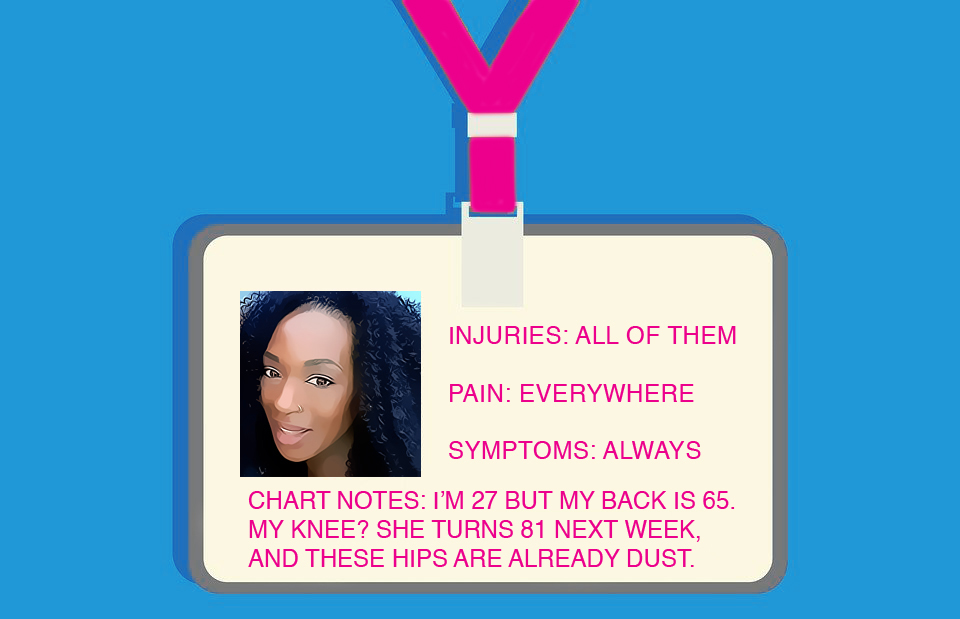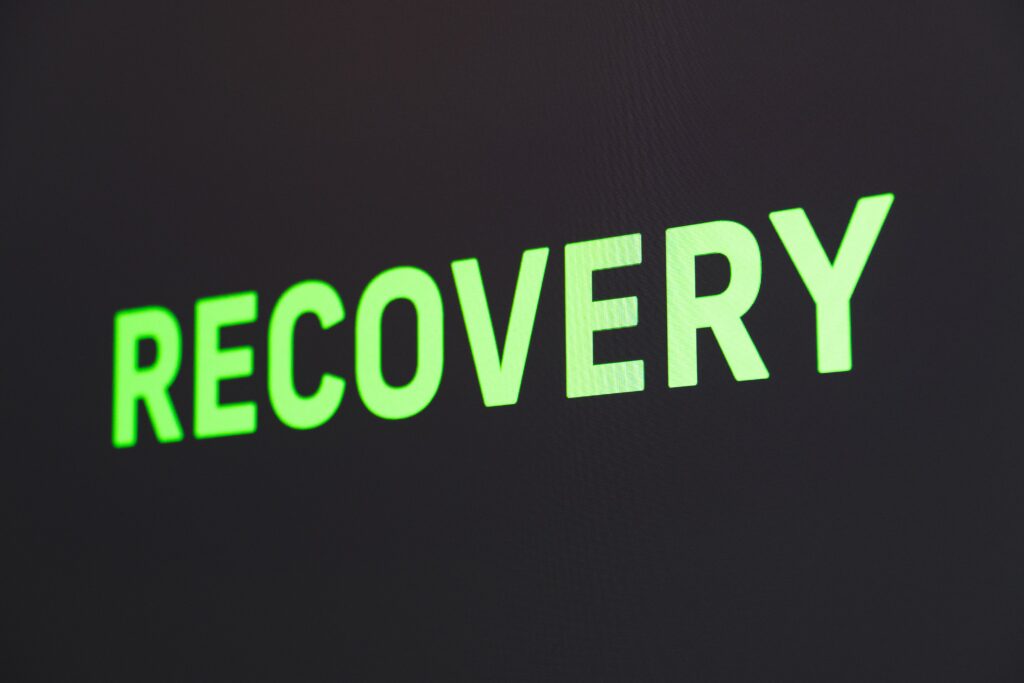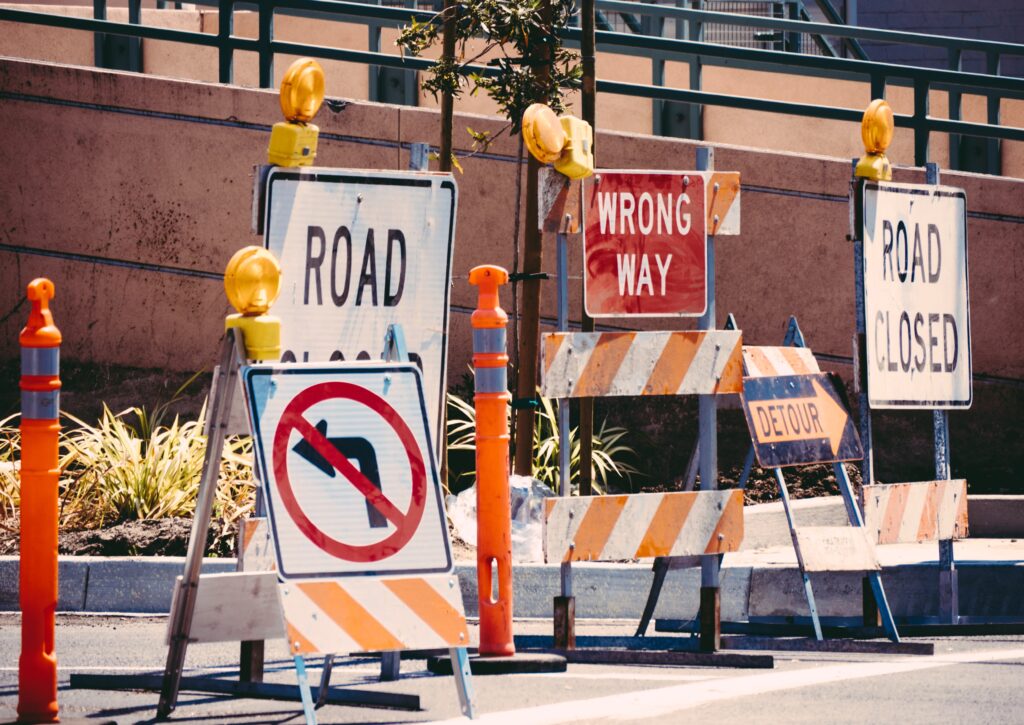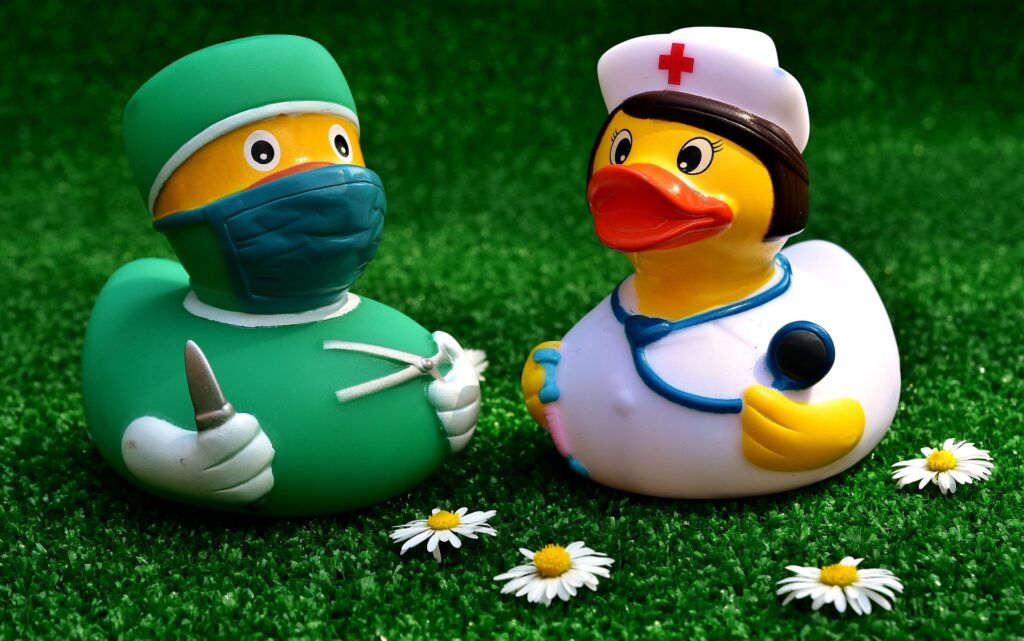I’m Injured. Now What?
You’re in a groove, making moves and gains, and then suddenly out of no where. . .OUCH! Injury with a side of setback leaves you sidelined in your life, and throwing a massive wrench in your physical and mental game. I’ve heard and experienced this more times than I can count. If you’re like most (myself included) an injury brings everything to an immediate and painstaking halt. And I know you’re wondering, well what else can I do, other than stop? The answer: sooooo much more than we think! This is a long read, but stick with me, it will be worth it!
Too often we make our injuries and recovery way worse than it has to be. YES, you read that right. WE often worsen our own recovery process. You see, when we can’t do what we want to do and have been doing, we tend to just stop doing anything. And that’s the worst thing we can do. To make matters even worse, we often pair that with an increased dosage of bad food and beverage choices as a means to “sooth” our pain. BIG F’ing mistake!
My Injury Credentials

So what should you do?
I’m glad you asked! Before I tell you, let’s back this up for a second and review my injury credentials (insert sad laugh here). I’m no stranger to injury and setback. I’ve had more than I care to count. 4 broken feet, foot surgery, a broken rib, a displaced knee, sprains, strains, concussions, partial rotator cuff tear, and bursitis in my hip. . .just to name a few. But let’s talk about the one that taught me the most: The Car Accident. . .
2017 was my year – 1st place win at PSO! 2018 I was still on a roll, having just earned my Pro card at USPDF, I was feeling unstoppable. In addition to being at the top of my pole game, I was also in the best shape of my life. Then November 28, 2018, in a matter of seconds. . .I lost it all. While driving to work, a car slammed into us instantly robbing me of all I had worked for and achieved. My right knee slammed into the dash sending a jolt of pain up my right side. My body whipped forward, my seatbelt snapped me back. The result? The entire loss of strength and range of motion in my right arm. I went from someone that could deadlift on a spin pole to barely being able to lift my arm up to dress or wave hi. Who knew that an accident with no blood, no deployed airbags, and that I literally walked away from could still cause so much damage to the body. WTF?!?!?
Was it my worst injury?
That’s hard to say when I’ve had so many injuries and setbacks. What I will say is that this was the one that I feel took the most from me. It completely stopped my career as a competitor, it impacted my teaching, it interfered with my workouts, and almost robbed me of my future – well at least that’s how I felt at the time. But it’s also the one where I learned the most, not just about myself and my body, but about rehab and recovery in general. So I’m sharing with you what I’ve learned about injuries, the recovery process and what you can do to help yourself not fall too far off the trail.
This post is a two-for-one serving of me trying to make some sense out of dealing with injury and setback, and letting those of you currently in this phase know that you’re not alone. And when I say injury, I mean any sort of a planned or unplanned setback that forces you on the bench for an extended period of time: this could also include a planned surgery or procedure, extended cold/illness, chronic migraines, chronic pain, pregnancy, etc.
Two Parts To Recovery

Recovery is made up of two parts: the mental and the physical. Both are equally important and must be nurtured in order to make a full recovery.
Let’s Get Mental
Often the mental aspect is the hardest part. However, it is also the key to an easier and quicker recovery. Negative emotions slow and clog the body, and generate more negativity. Don’t get me wrong, it’s frustrating when you’re forced to stop. Unable to practice, train, perform, and progress. And dealing with these feelings of frustration can make or break your recovery. It’s easy to say: “don’t let it get to you”, but we’re human. We feel. We suffer. We mourn. So cry your tears and shout your shouts, but then take a deep breath and remember that in time we will heal. So the sooner we get focused and committed to that healing, the closer we’ll be to it. Mind-body connection is real y’all! Mental healing is vita because when we take time to heal mentally, it positively enhances and supports your physical recovery. The body is a resilient and incredible machine that often comes back better and stronger IF you give it the right TLC. So here’s a few things you can do to help your mental recovery game:
• Use what you *think* you lost as a motivation to help you get it back.
• Focus your mind on your goals and what you can (still) do.
• Practice positive self-talk.
• Talk your feelings out to a trustworthy friend/family member, therapist or vent in a journal.
• Participate in activities that make you happy to help fight depression – which is a common, natural and nasty side effect to injury.
Do these things regularly and allow them to be the light in your life lighting the path of recovery to get you back to where you want to be.
Let’s Get Physical
The second part of recovery is the Physical journey. This is where the body mends and heals. This is where you need to be active and involved. So many times we just sit back like passengers on a road trip when it comes to our recovery. PASSengers are PASSive. . .don’t be! You must take an active interest in your recovery. Most doctors and rehab teams are concerned with getting you back to a baseline of functionality. However, for many, this is short of what you need for decent daily movement. And if you’re an athlete, aerialist, or live any sort of active lifestyle, then this seriously well below the standard of what you need for daily living. So here’s what you can do to be active in your physical recovery:
• Learn about your injury. Was there a root cause or was it a freak accident? If it was a freak accident, do you understand what the injury is? If not, ask ALL of the questions. Look up names of affected body parts (muscles, ligaments, tendons, organs, etc). Find out how the injury impacts your body, including what additional ailments and side effects it can lead to. If there was a root cause: faulty movement patterns, patten overload, cumulative injury cycle, lack of proper recovery practice, then these are things that need to be addressed before you hop back into your regular routine. If not, you’ll end up reinjured.
• Seek out specialists and second opinions in situations of surgery. Often there may be more solutions than the ones initially presented. Surgery isn’t always the best option, and it is a body-trauma of its own. You may even have to look outside of Western medicine. Holistic health is a game changer in many cases!
• Learn about the recovery and rehab. Often giving it time to heal and surgery are as far as doctor-patient care goes. However, I think rehab is essential for just about every injury. Sadly, it is something that is often not suggested, prescribed or required. And when it is offered or recommend, too often comes in the form of an outdated handout with stick figures in random stretches 👎🏽👎🏽👎🏽.
• Research any medications (prescription and over-the-counter) and supplements you may be required or desire to take.
• Talk to other people that have had the same injury. Find out about their experience, recovery, doctors/specialists, tools and any other feedback they are willing to share.
Another reason to get involved in your recovery is because not all care is equal. Doctors, surgical team, physio/rehab team, post rehab coach come in different levels of experience, know-how and helpfulness. There are so many things that affect the quality and amount of care that we get and have access to: insurance or lack thereof, sex, race, class, where you live, etc. So with these things playing a part in your recovery and care, it’s even more important to be involved.
Where I Went Wrong In The Past

Learn From My Mistakes
It’s so easy to blame my accident or past injuries for things like my weight gain, loss of flexibility and lost of skills, but the truth is my habits during my sidelined time really created the perfect opportunity for those issues to arise. I could have done better, and being a trainer myself (and a repeat offender), I definitely should have known better. The truth is, I kept eating the same amount of food, even though my body wasn’t doing the same amount of activity to handle or burn those calories. Eating more + moving less = weight gain. I also indulged in some sweet, comforting treats. My drinking also increased (tons of empty calories), because hey, what else am I supposed to do when I’m in timeout 🤷🏽♀️. A little bit of self control would have gone a long way. Take it from me, don’t try to sooth the pain and frustration of injury with what you put in your mouth – it will backfire and you will pay for it on the backend.
While most times I did continue my gym workouts in a modified and safe format, I wasn’t always working as hard as I could. I fell short on my personal flexibility, mobility and pole practice. And when I say fell short, I mean I basically ceased all solo practice. I learned no new skills/moves, taught only what my body already knew and demoed as little as possible. Even worse, I wasn’t told to rehab, so I didn’t. No wonder I regressed so much and basically felt like I was starting over each time.
Fast forward to Covid. While it wasn’t an injury, it was definitely a setback that sidelined us all. And with my shoulder still not 100% recovered, I’m team 🚫 NO new setbacks.🚫 So instead of falling back to old habits, I made it a point to continue my workouts to the best of my ability. I started my Quaranteam home-workout squad and limited my junk intake. I was able to keep off new weight, aka that “Quarantine-15” and even make some impressive strength gains. Knowing how I could make things worse, I opted to make things better for myself considering the circumstances. Even with so much out of our control, we must focus on the things that we do have control over.
How to Not Lose All Your Gains

Here’s what I’ve learned:
• Heal fully. Don’t rush it. Broken bones, torn muscles, ligaments and tendons, anything with broken skin…these things take time to heal and there’s no way around that. Putting your body back in commission before its ready is like a baby being born to early. You’re not fully developed and strong, which can lead to further complications.
• Avoid emotional and excessive eating. Maintaining your gains is not just about working out. You want to avoid gaining pounds of unnecessary weight through poor eating habits simply because you can’t move like you want to. Our eating habits play a huge roll in how far setback can go. Injury recovery is a crucial time to keep (or start getting) your eating on track. What we aren’t able to do in exercise or our sport, we can partially make up for with better eating habits.This may require you to eat a bit cleaner than your used to, but it will be worth it in the end. It’s not about following a strict diet, it’s about making better choices during your recovery.
• Keep moving! Do the workouts and activities that you can do, even if it’s not what or as much as you normally do. For example, if you have a leg or foot injury, don’t just skip the gym entirely because you’re unable to do lower body workouts. Instead, focus on upper body workouts and when you can incorporate some no-to-low impact activities such as cycling, swimming or aerial yoga to get you back in the swing of things. Likewise, if you have a hand or arm injury, hit the treadmill or do some lower body and core work.
• Help your body heal by rehabbing on your own. Be sure to do all of the *helpful* rehab exercises you’ve been given or have thoroughly researched. Do them all and do them regularly. Ice, heat, therabands and SMR tools are priceless! (Check out my go-to tools.)
• Reintegrate slowly. Once you’re cleared to move and workout be sure to strengthen the injured area. A weak body part doesn’t pull its own weight and can lead to compensations, synergistic dominance, lack of balance and body synergy and more injury. It’s important to supplement your strength with stability & mobility in the injured area. Often stability and mobility work may need to come before strength work.
• Don’t start where you stopped. It’s important to recognize the effects of inactivity and how it will impacts strength, endurance and coordination. It’s unsafe to try and jump back into the level of training we were at pre-injury. So take the time to reconnect with your bodies and reconnect your bodies with skills. It would be even better to revisit the basics and reinforce your foundation. This will help awaken your muscle memory in a safe and supportive manner.
• Get a trainer. You’ll probably have to do some searching, but find a professional that specializes in or has some experience with your injury or injuries in general. You may also consider seeking out a post rehab specialist or a corrective exercise specialist (HINT: That’s what I do 🙋🏾♀️).Or at the very least, find a trainer that thinks out of the box and is willing to help you find creative and safe ways to work around your injury. I was lucky to find one early on that helped me safely work around my bodily disabilities. Trust me when I say it makes ALL the difference.
So there you have it. You might be injured, but all is not lost. You can limit losses, improve your recovery and make your body more resilient in the long run. If you’re injured or have just be benched for too long and are ready to jump back in but need help getting started give me a shout. I can help you figure out what you can do, what you should do and create a recovery and rehab plan to keep you in the game.

